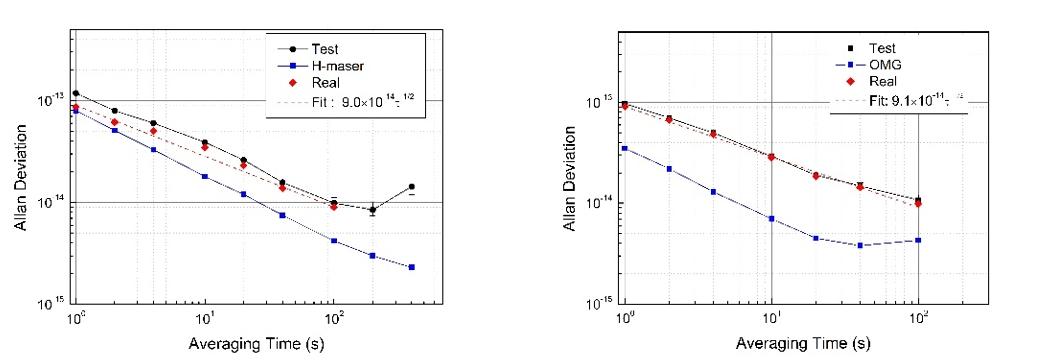The team approached the challenge of improving the frequency stability of rubidium atomic clocks from three aspects: improving the signal-to-noise ratio of atomic signals, reducing the phase noise of microwave probing, and suppressing the environmental sensitivity of the atomic system. They designed a low phase noise frequency synthesizer to control the impact of circuit noise on the stability of the rubidium clock at the level of 6.0×10-14τ-1/2. Additionally, a sealed box was used to isolate the physical system from the atmospheric environment, reducing the impact of atmospheric pressure fluctuations on the stability of the rubidium clock by an order of magnitude.

Comparison result of rubidium atomic clock and active hydrogen(H-maser) Comparison results of rubidium atomic clock and optical-microwave generator (OMG)
Rubidium atomic clocks currently have the highest market share and are widely used in defense and economic sectors such as satellite navigation, communications, power, and finance. The frequency stability of commercial miniaturized rubidium clocks is mostly at the 10-11τ-1/2 to 10-12τ-1/2 level. The previous international record was also held by this team, which was the third-generation satellite-borne rubidium atomic clock developed for China’s Beidou satellite navigation system, with a frequency stability of 7.0×10-13τ-1/2, the first rubidium atomic clock in the world with a stability of 10-13τ-1/2. The team’s groundbreaking progress, titled ‘Realization of a Rubidium Atomic Frequency Standard with Short-Term Stability in 10-14τ-1/2 Level’, was recently published in the authoritative international journal ‘IEEE Transactions on Instrumentation and Measurement’ and was pre-published on the official IEEE website. The first author is the doctoral student CUI Jiaqi, and MEI Ganghua and Zhong Da are the corresponding authors. APM is the sole institution that completed this work.
